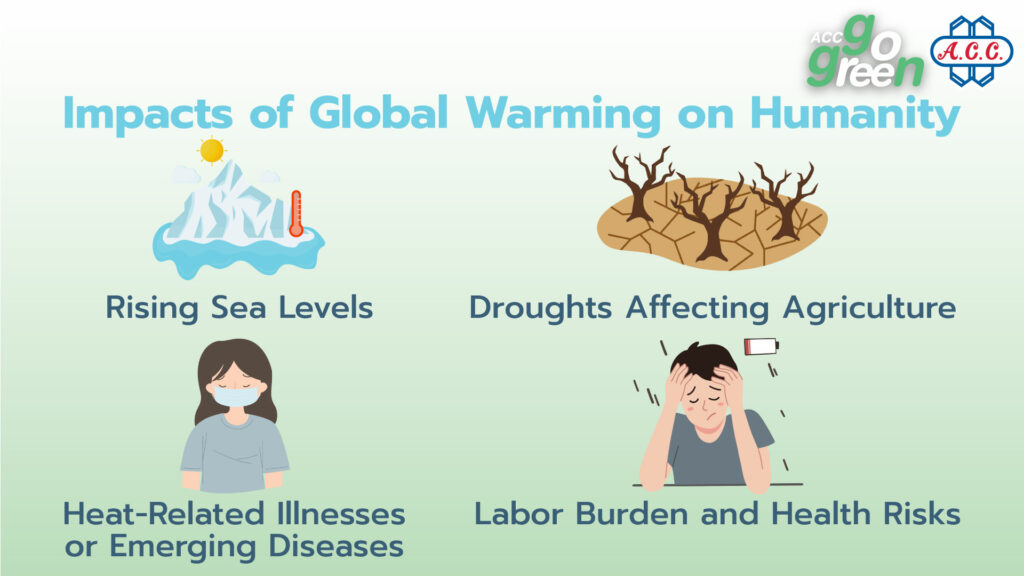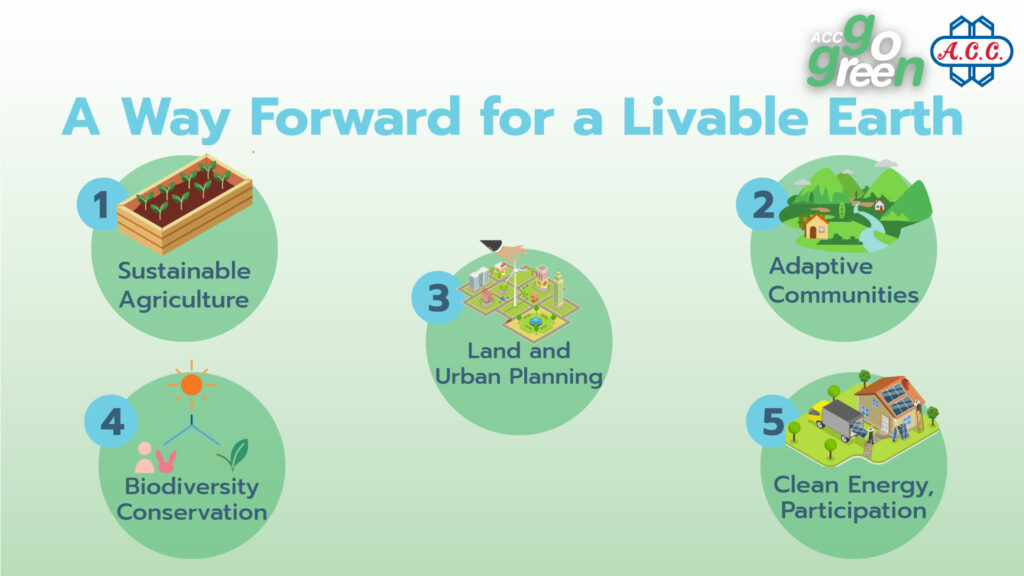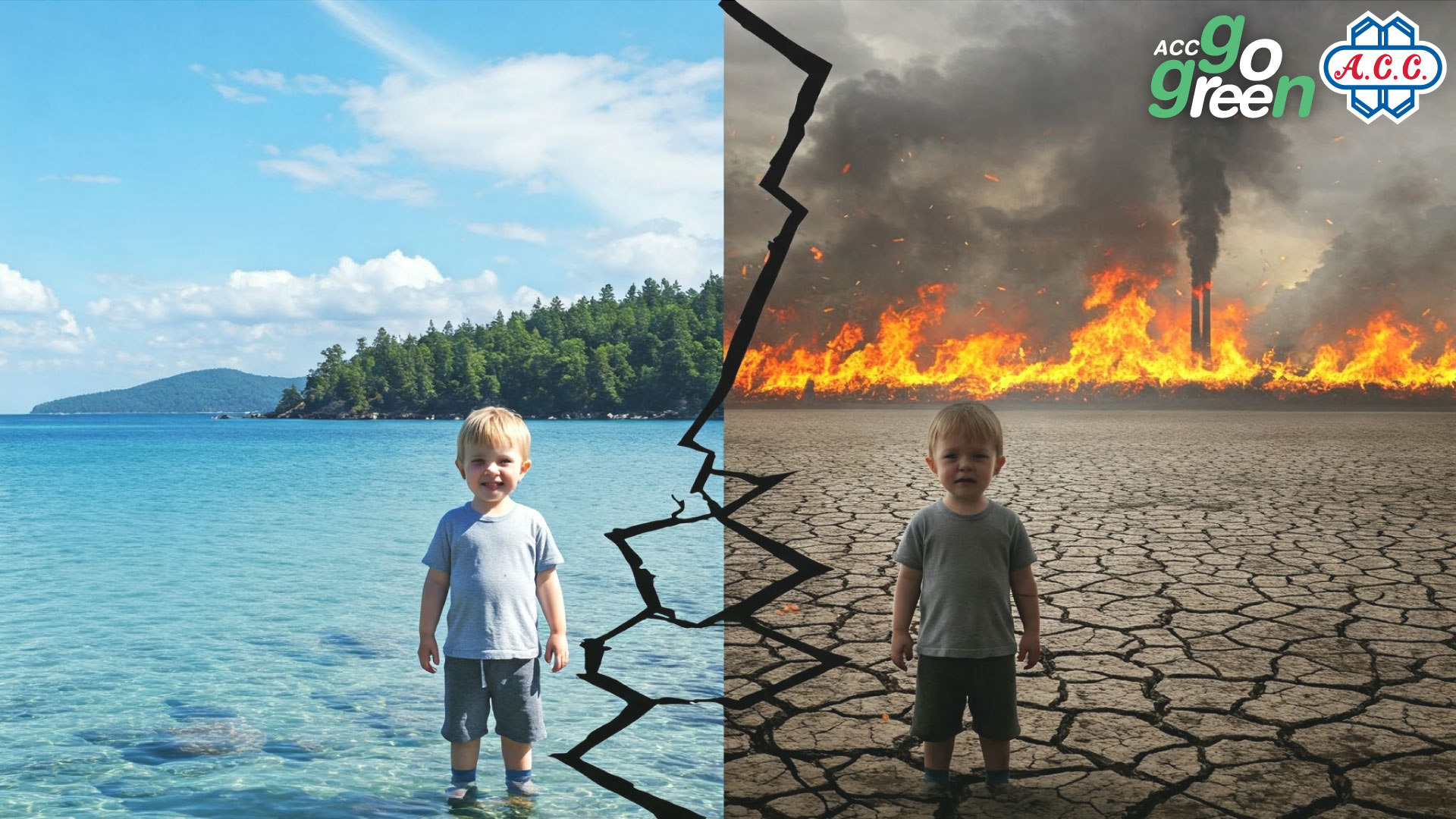Climate change or global warming is a significant issue that affects the environment and human lives around the world. The increase in global temperatures has led to more intense natural phenomena such as floods, droughts, and more severe storms. This article explores the causes of climate change, its impacts, and the management approaches to build a sustainable future.
Causes of Climate Change
Climate change results from the accumulation of greenhouse gases in the atmosphere. These gases trap heat from the sun, causing the Earth’s temperature to rise. The main causes of the increase in greenhouse gases include:
-
The burning of fossil fuels
The use of coal, oil, and natural gas in energy production and transportation releases large amounts of carbon dioxide (CO₂).
-
Deforestation
Forests absorb CO₂ from the atmosphere. Deforestation reduces the ability to absorb CO₂ and also releases the CO₂ stored in the trees.
-
Industrial activities
Industrial factories emit greenhouse gases such as methane (CH₄) and nitrous oxide (N₂O) through production processes and waste management.
 Impacts of Climate Change
Impacts of Climate Change
Climate change affects both the environment and society.
-
Melting glaciers and rising sea levels
Higher temperatures cause glaciers to melt, leading to rising sea levels, which may result in coastal areas being flooded.
-
Extreme weather conditions
There are more frequent and severe storms, droughts and floods, which affect agriculture and food security.
-
Health impacts
Rising temperatures increase the risk of heat-related illnesses and the spread of vector-borne diseases.
-
Impacts on labor
Outdoor workers face high heat exposure, which may reduce work efficiency and increase health risks.
Overlooked Impacts of Climate Change
-
Mental health and well-being of the population
Climate change not only affects the environment but also impacts people’s mental health. Frequent natural disasters such as floods and wildfires cause stress, anxiety and depression among victims. Additionally, the loss of homes and property affects psychological stability and people’s overall well-being.
-
Food security
Changes in climate affect food production. Droughts, floods and unpredictable weather reduce agricultural yields, leading to food shortages and higher prices for agricultural products, which in turn affects the food security of populations, especially in economically vulnerable areas.
-
Population migration
Changing climate conditions make some areas uninhabitable, such as coastal areas eroded by the sea or regions facing severe droughts. As a result, people are forced to migrate to safer areas with sufficient resources. This phenomenon poses challenges for urban management and resource allocation in host communities.
-
Loss of biodiversity
Climate change causes certain species of animals and plants to be unable to adapt quickly to changing environments, leading to extinction or population decline. This affects ecosystems and the natural services on which humans depend.
-
Impacts on local economies
The tourism and fisheries sectors are examples of economic sectors affected by climate change. Coral reef destruction, changes in marine ecosystems and unpredictable weather reduce tourist numbers and affect the incomes of local communities.
 Management Approaches for a Sustainable Future
Management Approaches for a Sustainable Future
Managing climate change requires action in several areas.
-
Community-level adaptation
Strengthening communities to cope with the impacts of climate change is essential. Developing early warning systems, preparing evacuation plans and training people on disaster response methods help reduce damage and enhance community preparedness.
-
Promoting sustainable agriculture
Developing climate-resilient farming practices such as using drought-resistant crop varieties, efficient water management and environmentally friendly technologies helps improve food security and reduce environmental impacts.
-
Sustainable land use planning
Land use management that considers climate change risks, such as avoiding construction in flood-prone areas, building climate-resilient infrastructure and conserving natural areas, helps reduce risks and enhance the sustainability of urban development.
-
Conservation and restoration of biodiversity
Protecting natural areas, establishing conservation zones and restoring damaged ecosystems help preserve biodiversity and strengthen nature’s ability to adapt to climate change.
-
Promoting public participation
Raising awareness and encouraging public involvement in addressing climate change, such as supporting clean energy projects, reducing energy consumption and changing consumption behavior, helps create a sustainable society and reduce environmental impacts.
Conclusion
Climate change has diverse and complex impacts, some of which may be overlooked. Recognizing these impacts and taking appropriate action will help build a sustainable future for all. Adaptation and participation from all sectors of society are key to facing the challenges.
Sources:
• Causes and impacts of climate change — United Nations Thailand
• Impacts of global warming and how to reduce it in the Society 5.0 era — Singha Estate


